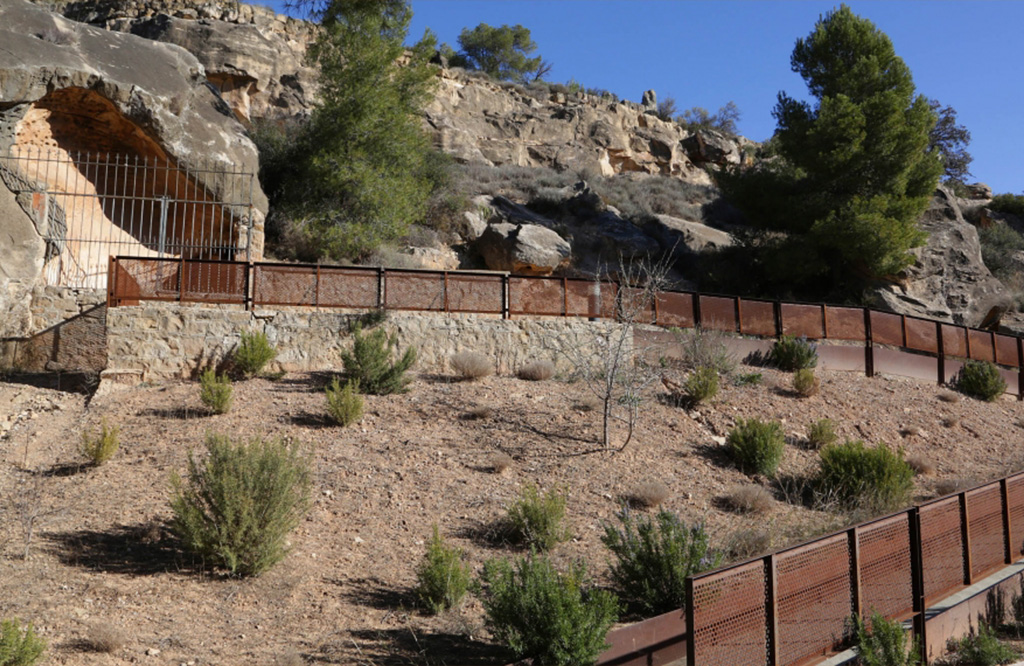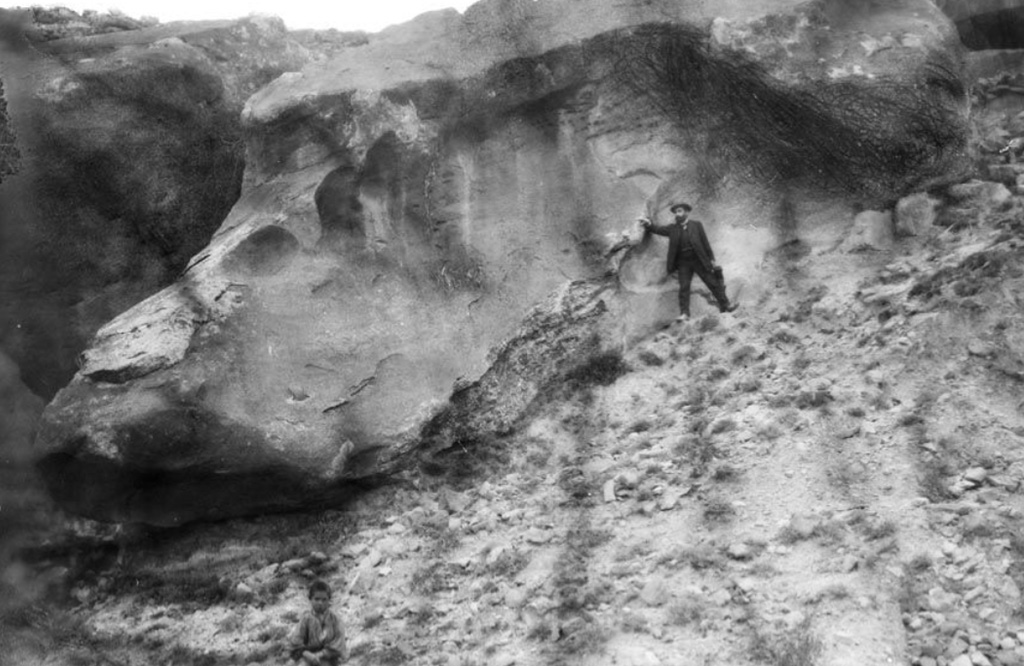A sacred space
Ancient societies chose Roca dels Moros as an age-old place of worship. To what extent are we able to determine the original meaning of the social and symbolic representations on display? What do they tell us about the worldview of the people who created them?
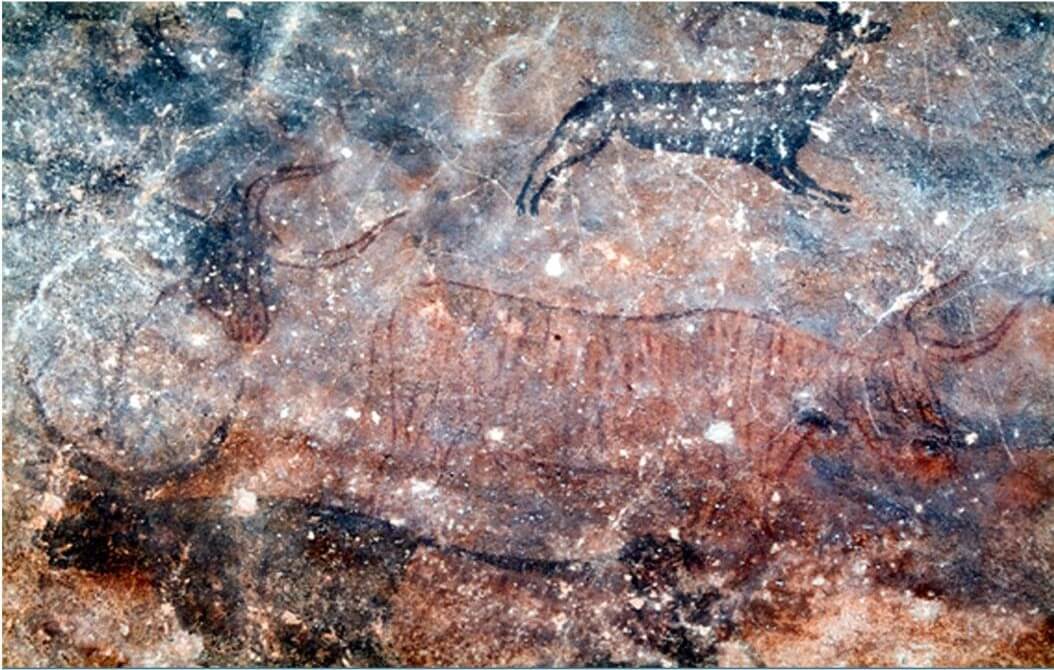
Detail photograph: hunting scene with schematic figures
© Agència Catalana del Patrimoni Cultural
Roca dels Moros is one of the oldest sacred sites in Catalonia, a “sanctuary” frequented from the era of the last hunter-gatherer groups until the Middle Ages. The representations that can be found here refer to traditions, beliefs and rituals inherited from generation to generation over the millennia.
Detail photograph: bulls, schematic figures and engravings of fish
© Agència Catalana del Patrimoni Cultural
The iconography depicts scenes of a ritual and symbolic nature, including human and wild animal figures often interacting.
The engravings and animal paintings reveal a major knowledge of local fauna. Goats, bulls, deer and wild boar are common Mediterranean fauna animals.
Detail photograph: women, bulls and goats
© Agència Catalana del Patrimoni Cultural
Detail photograph: goats
© Agència Catalana del Patrimoni Cultural
Detail photograph: cervids
© Agència Catalana del Patrimoni Cultural
These representations imply a way of understanding and explaining their world. The artists expressed their relationship with their surroundings, their links with nature and at the same time how they participated in their environment. We witness a stag hunting scene and other enigmatic interactions between human and animal figures.
Detail photograph: hunting scene with schematic figures
© Agència Catalana del Patrimoni Cultural
Among the main figures in the mural are women. The composition of the female figures is still a challenge for interpretation and point of debate, as the time that separates us from their male and/or female authors does not allow us to ascertain their meaning with certainty.
Detail photograph: central part of the frieze
© Agència Catalana del Patrimoni Cultural
A composition at various times
Nonetheless, the data provided by research help us to advance in its interpretation and refute the hypothesis of early researchers who viewed it as a “phallic dance”.
We now know that the composition was created at various times, in which the female couples were added by taking advantage of the existing spaces and the group was enlarged. The female figures, like the other elements, were gradually incorporated, thereby creating a group that was not initially planned and does not present any movement that could be interpreted as a dance.
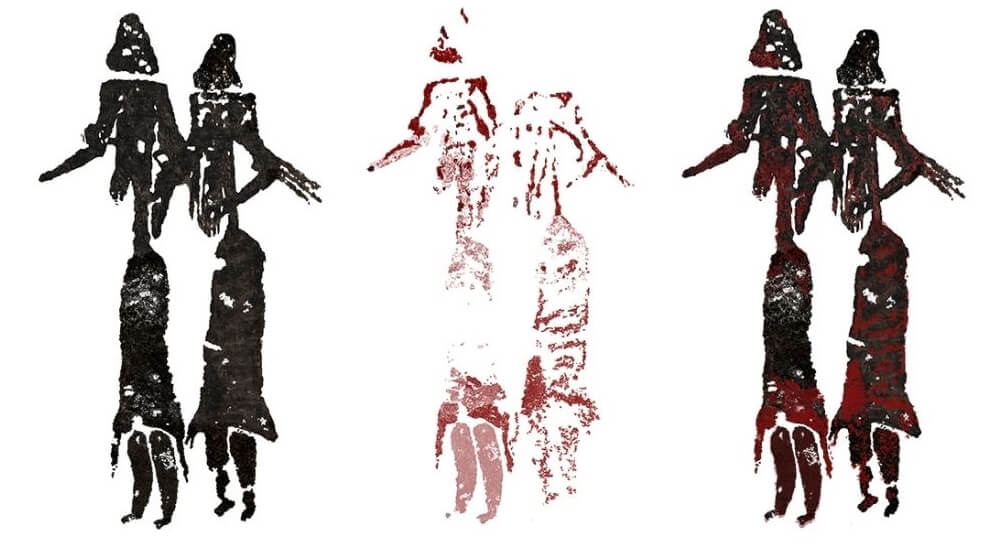
Pair of women 33-34. Combinations of colours in two-colour or repainting: black; reddish-brown; black and reddish brown
© Agència Catalana del Patrimoni Cultural
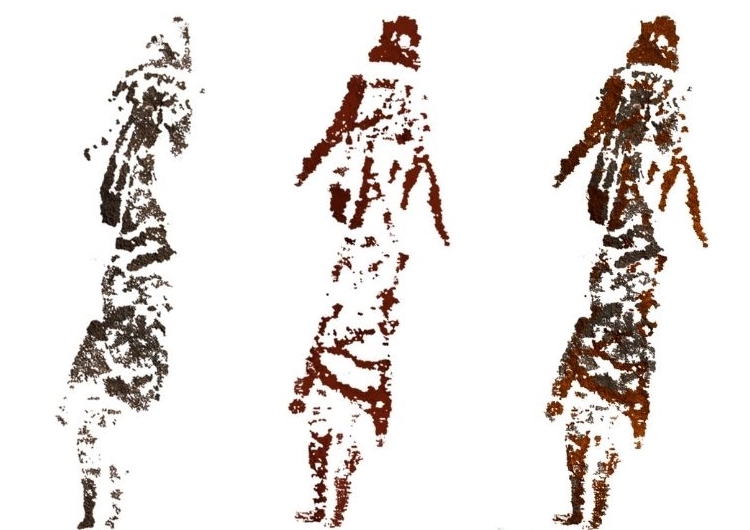
Single figure 35. Polychrome:black; dark brown-red; combination of colours
© Agència Catalana del Patrimoni Cultural
We can therefore recognise this composition as part of the worldview of early hunter-gatherer and farming peoples, marked by the repetition of natural cycles and focused on their perpetuation.
The presence of women in the composition allows us to reflect on and highlight the position occupied by prehistoric women in social economic actions and the construction of the group’s identity.
Superimpositions, repainting and restorations mean that some of the new paintings partially or totally cover earlier representations to create two-colour compositions that were unknown until today.
Artistic creativity is used to incorporate and fit new figures into pre-existing compositions. We see a peculiar pair of women beside the fawn who initially look like a four-legged figure. The successive accumulation of figures and motifs suggests that the very act of painting had its own meaning in this space: to recall and strengthen cultural values.
One of the great research challenges is to understand what it is that distinguishes this place and has made it last so long.
It is to understand what motivated the people who lived in the area to return again and again to appropriate the place until it became sacred and socially significant.
View of landscape from Roca dels Moros, 2019
Author: Albert Rubio
Visiting the Roca dels Moros Rock Art Site today is the continuation of this cultural heritage and somehow represents the survival of Roca dels Moros as a “sanctuary”.
The village of El Cogul therefore conserves a heritage of exceptional universal value according to UNESCO, the continuation of a chain of cultural transmission that dates back thousands of years.
A couple of women welcome visitors to Roca dels Moros rock art site
© Agència Catalana del Patrimoni Cultural
